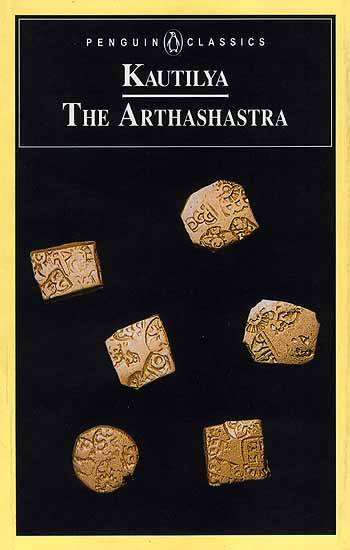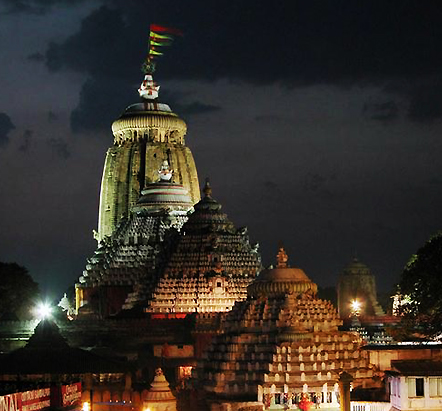The third part of the series on Hindu Temples, their conception, history, heritage and legacy authored by M.D. Srinivas.
The state in India had no power to define or legislate what is dharma. On the other hand, the Brihadaranyaka Upanishat states that:19
Kshatrasya kshatram yaddharmah
Dharma is the sovereignty of sovereignty
Dharma, in its universal aspect, refers to rta or the natural order and harmony amongst all aspects of creation. There is also the dharma, of every constituent unit of society, the kulas or families, the gramas or localities, jatis or communities, srenis or professions, sampradayas or religious fraternities etc., which include the time-honoured customs and traditions, samaya, achara and vyavahara of these groups.

Manusmriti
Dharma in its universal aspect is the very principle of creation, and the state had no role in defining it. It was the great rishis and acharyas who served as the interpreters of this dharma which is sanatana, eternal. As Manu states:20
Vedo’khilo dharmamulam tadvidanca smrtisile
Dharma as the achara and vyavahara of various groups was to be determined by the groups themselves and the State had no role in legislating them either. The primary duty of the King in India was to ensure protection to every group to follow their svadharma. As Manu states:21
jatijanapadan dharman srenidharmansca dharmavit samikshya kuladharmansca svadharmam paripalayet
Further, the kings in India were enjoined to protect and follow the desa-dharmas even in conquered countries. As Yajnavalkya states:22
Yasmin dese ya acaro vyavaharah kulasthitih
Tatghaiva paripalyo’sau yada vasam upagatah
When a new territory comes under one’s rule, the King should meticulously follow the achara, vyavahara and kula-sthiti, the customs and practices of that region and the relevant group.
As regards settlement of disputes, the classical Indian position is that they are to be basically settled by the various component groups themselves. The role of the state is mostly as an arbiter for disputes between groups. The duty of the king to protect the dharma of every unit of society, kula, grama , sreni, etc., was equally valid even in respect of deviant groups such as pakhandis etc. As Yajnyavalkya states:23
sreninaigamapakhandigananampyayam vidhih bhedam caisam nrpo rakset purvavrttim ca palayet
Further, it is not only the major groups such as grama (locality), sreni (guild) etc., but all groups in general were entitled to settle disputes as per their time-honoured dharma. A famous injunction of Brihaspati is that:24
Kinasah karuka mallah kusidasreninartakah linginastaskarascaiva svenadharmena nirnayah
If the state had no role in legislating what is dharma of various groups and if its role in settling disputes was fairly limited, then what is the nature of rajasasana, the orders of the King? The classical Indian texts do consider this question in detail. Essentially, what emerges from such discussions as also from the examples available from the vast corpus of inscriptions, is that most of these rajasasanas are in the nature of vyavasthas or decisions of arbitration which are made in the context of settlement of particular disputes. It is very important to keep this highly circumscribed role of the state in India in mind, while we look at the relation between the state and the religious institutions.
Acarascaiva sadhunam atmanastustirevaca
The temples were managed by local bodies following established traditions.
From classical Indian position as regards the role of state, outlined above, it should be clear that the main duty of the King with respect to temples and religious institutions, namely palana or protection, in no sense implied any control or involvement with the administration of the institution or its endowments. He was to ensure that the properties and endowments to the temple or the religious institution and its functionaries were protected and that there were no obstacles in the way of the temple functioning as per the established customs and traditions.
Therefore, in the large corpus of dharmasastra literature, there is very little said on how temples and their endowments are to be administered and there is almost no discussion of how worship is to be organised. Such issues are sometimes discussed in the large number of sthala-puranas and other chronicles of various temples, the traditional histories of different sampradayas, and of course the various agamas which deal specifically with worship.

Kautilya in his Arthasastra states that the temple properties are to be managed by the elders of the locality:25
Baladrvyam gramavrddhah vardhayeyuh…devadravyanca
The large corpus of inscriptions which has survived in many of the temples clearly shows that, from ancient times, the management of temples has been invariably vested with a “local body” of Sthanikas, Sthanattar or Sthalattar. During the Chola times, they are referred to as the Variya-perumakkal (the elected or chosen elders). It is this body which accepted all the grants and gifts to the temple, administered the properties of the temple, appointed various temple functionaries and also participated in the deliberations on occasions when the king or his representatives arbitrated on disputes between different groups regarding the functioning of the temple.
We can have some idea of the composition of this local body of Sthanattar from an important inscription in Sri Venkatesvara temple at Tirumala. This inscription of 1390, while describing the share of the prasadams to be given to the Sthanattar, gives the following composition of this body:26
4 nirvaham for the Tirupati Srivaishnavas
3 nirvaham for the Sabhaiyar (Councillors) of Thirucchanur
1 nirvaham for the Nambimar (Archakas of the Temple)
2 nirvaham for the Kovil Kelkum Jiyars (the Periya and Chinna Jeeyar Swamis)
2 nirvaham for the Kovil Kanakku (Temple Accountants)

Tirupathi Temple.
It is important to note that this body of Sthanattars (comprising twelve members, as is stated in several other inscriptions also) had representation from the Sabha (council or assembly) of the locality, major temple functionaries (archakas and accountants), the religious leaders of the denomination associated with the temple (Jeeyar Swamis) as well as the local devotees (Tirupati Srivaishnavas). Most of the Indian temples have been closely associated with one denomination or other and the above composition is indeed a fair representative of the local committee of management in the case of most temples.
A study of the corpus of temple inscriptions and also of the sthala -puranas and other temple chronicles would show how the management of the finances, overall administration and organisation of worship at the temples, were supervised by the local body of Sthanikas in collaboration with other locality, community and denominational organisations and how the state’s role was essentially one of facilitating these bodies in their functioning and arbitrating in some of the disputes either between these bodies or with outside individuals and institutions. There was no authority for the state to interfere in the management of temple finances or in its administration or in the conduct of worship there. As regards the royal decisions regarding the settlement of disputes, such decisions were to be communicated to and implemented by the Sthanattars. Also the decisions were arrived at in the presence of and with the concurrence of the Sthanattars.
One scholarly study on temples and the state in pre-British India concludes that:27
Hindu kings …thus had two sorts of relationships to temple deities: endowment and protection. The latter aspect of their role, however, did not connote a capacity to legislate in the modern Western sense, nor did it imply centralised bureaucratic management of temple affairs. The effective bearers of royal commands, and thus of the “protective” function, were local, generally sectarian groups and leaders. Without endowment, the king would cease to place himself in an active relationship with the…deity and thus would fail to acquire the honour consecutive of sovereignty. Without protection, that is, without the authoritative royal ratification of local regulations by royal edicts (rajasasanam), the king would have abnegated his fundamental duty towards his subjects.
The inviolability of local traditions of worship
When the state has no direct role in the management of the temple and is duty-bound to protect the time-honoured traditions of the institution, there is indeed no question of the state having any say in matters of worship. The principle that no one from outside, however powerful or revered he may be, can seriously interfere in the established traditions of worship, is illustrated by a famous anecdote concerning the great Srivaishnava Acharya, Sri Ramanuja in relation to Jagannatha temple at Puri. This anecdote is mentioned in the traditional accounts of the life of the Acharya such as Ramanuja Champu, Prapannamritam and Ramanuja Divya Charitai.
Prapannamrita recounts28 that the Acharya, while on his way back from Saradapitha in Kashmira, visited Purushottama Kshetra (Puri) to have darsana of Jagannatha. He tried to persuade the archakas there to follow the Pancharatra mode of worship, as that was to give akshaya-phala, everlasting merit, and was the sure way to moksha. The archakas sought the refuge of Sri Jagannatha and obtained abhaya from him that their ancient mode of worship will not be disturbed.

Lord Baladeva, Goddess Subhadra and Lord Jagannatha.
Sri Jagannatha pleaded with the Acharya that: “O Jagadguru, I have made several divya kshetras follow your precepts, so let me have my way here. Let me freely enjoy myself here along with these people”. Still the Acharya thought within himself that he would somehow establish the Pancharatra mode of worship in this Purushottama Kshetra also. Sri Jagannatha, who felt that the Acharya would succeed in his endeavour and that would lead to immeasurable grief for his devotees, had no option but to employ his yogamaya to transport the Acharya to Srikurma Kshetra (Sri Kurmam in Andhra Pradesh) in the night while he was asleep.
It is important to note that this anecdote of the unsuccessful attempt by the Acharya to bring about a change in the mode of worship at the Jagannatha temple is presented in the traditional biographies of the Acharya, which describe his life and work with great respect and devotion. A somewhat abridged account of the same anecdote is also given in Madala Panji, the chronicle of the Jagannatha temple, where Sri Ramanujacharya is merely referred to as the “Acharya”. It is indeed of great significance that such authentic traditional accounts record that even great Acharyas and Bhaktas have no authority to alter the time-honoured traditional modes of worship. Such is the sanctity accorded to the dharma-vyavasthas of temples in the Indian tradition.
To be continued in the next part of the series.
19 Brihadaranyakopanishat, I.14
20 Manusmriti I.6
21 Manusmriti, VIII.41
22 Yajnavalkya I.343
23 Yajnavalkyasmriti, II.192
24 Brihaspati cited in Vyavaharanirnaya, p.1
25 Kautiliya Arthasastram, 2.1
26 Tirupati Devasthanam Inscriptions, Vol. I, p.173-176
27 Appadurai, Worship and conflict under Colonial Rule, Cambridge 1981, p.71.
28 Prapannamritam, Ed. S.Krishnaswamy Iyengar, Puttur Vol. I, 1983, p.378 -85
29 Sita Ram Goel et al, Hindu Temples: What Happened to Them, Vols.I, II, New Delhi 1990, 1991. The list is contained in Vol.I, p.62-182.
Dr. M.D. Srinivas is Chairman of Centre Policy Studies, Member of the ICHR, Physicist, Sanskrit scholar, and author of numerous books including the widely-acclaimed Annam Bahukurvita and Indian Demographics.

